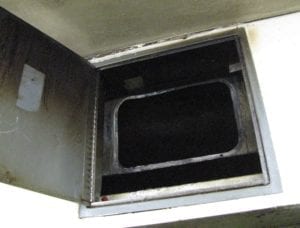Some products/activities are inherently dangerous (e.g., cigarette smoking, skydiving) and yet some people enjoy them and pay good money to partake of them. In most cases, the more dangerous the activity, the fewer people choose to engage in it. One notable exception is the hot beverage – a potentially hazardous product that is enjoyed by millions.
 Numerous studies have shown that customers will reject a cup of coffee or tea when it is served at a temperature that won’t scald them if accidentally spilled. Scalds can occur at temperatures as low as 140°F if the contact time is long enough and temperatures above 150°F will almost certainly cause 1st degree burns or worse if a sufficient quantity contacts the skin. Such details notwithstanding, a large percentage of consumers will reject hot beverages for being “lukewarm” if the temperature doesn’t exceed 155°F. In fact, the average coffee temperature preferred in these studies is approximately 185°F and the average preferred tea temperature is above 200°F.
Numerous studies have shown that customers will reject a cup of coffee or tea when it is served at a temperature that won’t scald them if accidentally spilled. Scalds can occur at temperatures as low as 140°F if the contact time is long enough and temperatures above 150°F will almost certainly cause 1st degree burns or worse if a sufficient quantity contacts the skin. Such details notwithstanding, a large percentage of consumers will reject hot beverages for being “lukewarm” if the temperature doesn’t exceed 155°F. In fact, the average coffee temperature preferred in these studies is approximately 185°F and the average preferred tea temperature is above 200°F.
Furthermore, the chemical process associated with brewing coffee or steeping tea is more effective when the water is as hot as possible. More essential flavors and fragrances are extracted from the beans and leaves when the water is close to boiling. This is why tea kettles “whistle” (to ensure the water has reached a rolling boil before pouring into the teacups) and espresso machines “hiss” (to announce the conversion of pressurized liquid water to steam as it migrates through the coffee grounds).
To be fair, these studies also show that the optimum temperature for a beverage to be “consumed” is considerably below 212°F, but customers invariably realize that if they “receive” the beverage at a temperature that is well above optimum, it will reach its “ideal” temperature within a few minutes. On the other hand, the 2nd Law of Thermodynamics ensures that if a beverage is “received” below its optimum temperature, no amount of time will prevail upon it to absorb heat from its surroundings and approach a more desirable (i.e., hotter) temperature.
The other factor that makes hot beverages a dangerous product that consumers willingly enjoy is their ability to mitigate the risk of drinking them. They can slowly sip or aerate the liquid, thus preventing an injurious amount of heat from being transferred into the mouth tissue, even though the temperature is high.
It is worth noting that the term “safe” should never be construed to mean “without risk”. Most people consider driving a car to be a “safe” activity even though they are fully aware that tens of thousands of motorists die each year in collisions. On the contrary, “safe” simply means that the level of risk is “acceptable” to the population who engages in that activity or uses that product. Consumers believe that drinking coffee is “safe” because the benefits of consuming a great cup outweigh the risk of serious injury if they happen to spill it.
The purpose of “Investigation Anecdotes” is to inform our readers about the intriguing field of engineering investigations. We hope you are instructed by this content, and we encourage you to contact us if you seek additional information. Copyright Martin Thermal Engineering, Inc. (2016)
